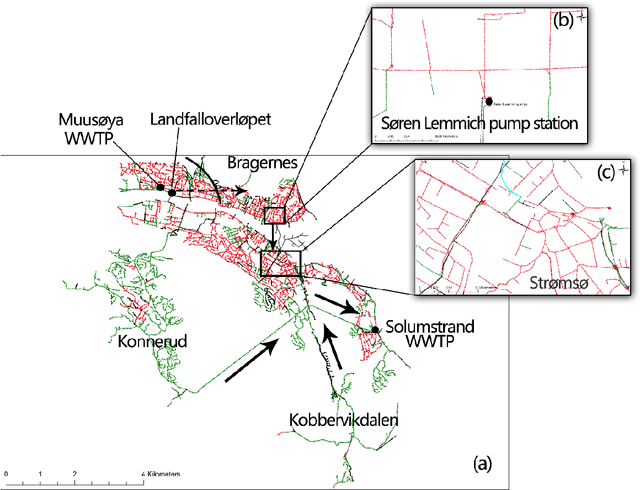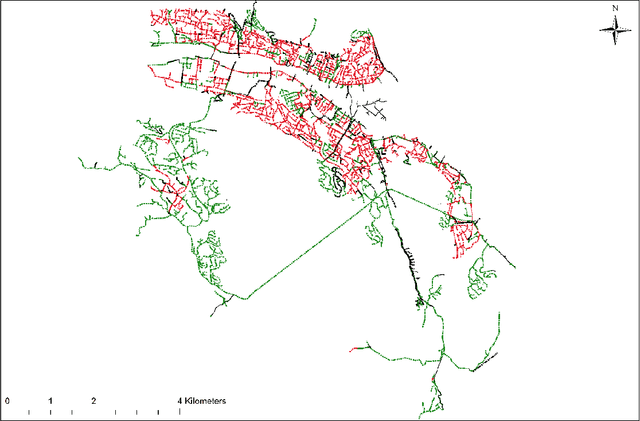Geir Lindholm
Exploiting Capacity of Sewer System Using Unsupervised Learning Algorithms Combined with Dimensionality Reduction
Nov 09, 2018



Abstract:Exploiting capacity of sewer system using decentralized control is a cost effective mean of minimizing the overflow. Given the size of the real sewer system, exploiting all the installed control structures in the sewer pipes can be challenging. This paper presents a divide and conquer solution to implement decentralized control measures based on unsupervised learning algorithms. A sewer system is first divided into a number of subcatchments. A series of natural and built factors that have the impact on sewer system performance is then collected. Clustering algorithms are then applied to grouping subcatchments with similar hydraulic hydrologic characteristics. Following which, principal component analysis is performed to interpret the main features of sub-catchment groups and identify priority control locations. Overflows under different control scenarios are compared based on the hydraulic model. Simulation results indicate that priority control applied to the most suitable cluster could bring the most profitable result.
Enhancing Operation of a Sewage Pumping Station for Inter Catchment Wastewater Transfer by Using Deep Learning and Hydraulic Model
Nov 09, 2018



Abstract:This paper presents a novel Inter Catchment Wastewater Transfer (ICWT) method for mitigating sewer overflow. The ICWT aims at balancing the spatial mismatch of sewer flow and treatment capacity of Wastewater Treatment Plant (WWTP), through collaborative operation of sewer system facilities. Using a hydraulic model, the effectiveness of ICWT is investigated in a sewer system in Drammen, Norway. Concerning the whole system performance, we found that the S{\o}ren Lemmich pump station plays a vital role in the ICWT framework. To enhance the operation of this pump station, it is imperative to construct a multi-step ahead water level prediction model. Hence, one of the most promising artificial intelligence techniques, Long Short Term Memory (LSTM), is employed to undertake this task. Experiments demonstrated that LSTM is superior to Gated Recurrent Unit (GRU), Recurrent Neural Network (RNN), Feed-forward Neural Network (FFNN) and Support Vector Regression (SVR).
DeepCSO: Forecasting of Combined Sewer Overflow at a Citywide Level using Multi-task Deep Learning
Nov 09, 2018



Abstract:Combined Sewer Overflow (CSO) is a major problem to be addressed by many cities. Understanding the behavior of sewer system through proper urban hydrological models is an effective method of enhancing sewer system management. Conventional deterministic methods, which heavily rely on physical principles, is inappropriate for real-time purpose due to their expensive computation. On the other hand, data-driven methods have gained huge interests, but most studies only focus on modeling a single component of the sewer system and supply information at a very abstract level. In this paper, we proposed the DeepCSO model, which aims at forecasting CSO events from multiple CSO structures simultaneously in near real time at a citywide level. The proposed model provided an intermediate methodology that combines the flexibility of data-driven methods and the rich information contained in deterministic methods while avoiding the drawbacks of these two methods. A comparison of the results demonstrated that the deep learning based multi-task model is superior to the traditional methods.
 Add to Chrome
Add to Chrome Add to Firefox
Add to Firefox Add to Edge
Add to Edge